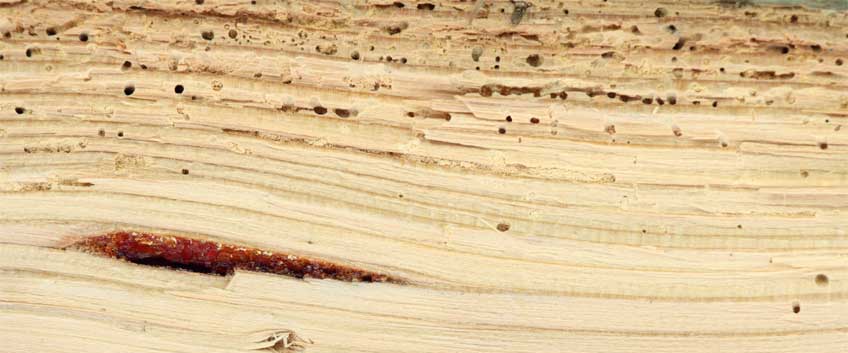
Having wood flooring has indisputable benefits in terms of visual improvement of every space and many other advantages in addition. However, having wood flooring is not that easy in terms of maintenance. Well, wooden floors often don’t require such thorough maintenance at all and a simple and easy cleaning routine is more than enough, however, sometimes there are some unexpected situations you have to deal with… like, for example, dealing with wood flooring bugs.
Many bugs enjoy attacking and destroying your wooden flooring for sure and they are not pretentious at all, enjoying equally solid wood, engineered wood and parquet. To stop them do so, it is important to know which bug is which and how to treat it properly. For example, powder post beetles are popular in the UK and attach most of the wood species used for flooring manufacturing. If left untreated, they soon or later will turn wood into fine powder. Another type of beetle attacking your floor is the common furniture beetle you may also know as woodworm.
It is easy to identify their presence because they leave round holes and egg-shaped pellets of bore dust. Death-watch beetles simply love older wooden floors and are less common in new buildings in London. They often attack hardwoods that are already a subject of rot and decay issues. This type of bug leaves larger holes in the timber. House longhorn beetles, on the other hand, love softwoods, however, they also leave your floor damaged and are often easy to visit your home during summer. And finally, wood-boring weevil, they love damp wood and moisture and will disappear as soon as moisture is removed.
How to identify a bug infestation?
No matter if it comes to hardwoods or softwoods, every wooden floor can be a subject of bug infestation. Normally this won’t be unnoticeable, because insect larvae always create holes in the timber. However, these holes are permanent and you can never know if the infestation down there is still active. Some signs may give you a hint and confirm an active infestation such as fine and powdery bore dust, fresh exit round or oval holes, dead beetles located near the damaged timber and also clean and fresh hole walls, that you have to check out with a magnifying glass.
How to remove the unwanted houseguests?
The key moment when treating pests and wood flooring bugs is to make sure that not only the adult insect is treated, but also eggs and larvae, which can live in the timber for up to 10 years if it is left damp. Firstly, start by removing and treating the conditions that allow eggs, larvae and insects to feel welcome in the timber like moisture, easily removed by ventilation, removal of moisture sources such as leaky roofs and old pipes, or artificial drying. Chemical treatment can be sometimes a good option to stop the insects from damaging even more. Before taking any action, you better be sure to contact the pest control professionals.